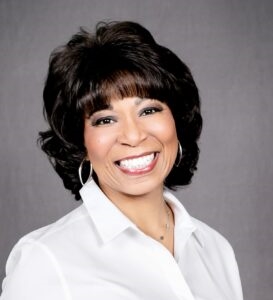This is the surprising force that could help crack the ‘Black ceiling’
After hundreds of millions spent on diversity programs, and scores of poetic corporate promises of imminent improvement, the stats barely budge. Black people (14 percent of the American population) have been under-represented in executive ranks for decades. In the S&P 100’s 50 largest companies, only 2% of top executives are Black.
The recent study, PowHer Redefined: Women of Color Reimagining the World of Work, notes that women of color are 19% less likely than white women to feel their skills are leveraged. That’s a lot of lost leverage.
Moreover, real progress in executive diversity would mean big gains for business, and we’ve known that for a while. A 2018 Boston Consulting Group study suggests that greater diversity on leadership teams improves financial performance and innovation. .
Still, the institutional and unconscious barriers that have frustrated such initiatives may finally be swept aside not by noble progressive intention, but by systemic alterations of work itself. That’s why the COVID-19 pandemic, and the sweeping changes it brought to how American business is done, where it is done, and who does it, might finally crack this Black ceiling, even if unintentionally.
Nearly 60% of the Black labor force lives in the South, federal data shows, while far fewer Blacks live in the West, home to much of the booming tech industry. Blacks comprise less than 6% of California’s population. In Colorado, less than 5%. Idaho, less than 1%. Yet, according to the Bureau of Labor Statistics, the West is the region with greatest professional opportunities in coming years.
The good news: Division meetings, performance reviews, budget presentations, even board meetings now are routinely conducted via video conferencing. Remote work has swiftly graduated from a perk to a base expectation. As the distance between a company HQ and its employees–indeed, between the employees themselves–grows less relevant, the importance of geographic racial proportions also fades; more opportunities arise for more kinds of people.
Another challenge Black professional face is accessing opportunities in the first place. I’ve heard scores of white associates claim, “I have lots of Black friends.” No, they don’t. As noted in a Brookings study, even as metropolitan areas diversify, white Americans still live in mostly white neighborhoods. Their social, political, and professional interactions are restricted largely to other whites. But the surge of Black presence on social media during the last tumultuous year has, in effect, introduced millions of white people to new Black friends. The pool of Black professionals known to well-meaning whites has vastly expanded, and that can’t help but statistically improve consideration.

[Photo: courtesy of Deborah Elam]
Finally, Black professionals cite lack of mentoring as a chief reason for the Black Ceiling in corporate America. The pandemic-borne explosion in video conferencing has stretched the span of a mentor’s influence beyond traditional one-on-one engagements to dozens, hundreds, even thousands of aspiring executives. The PowHer Redefined study notes that 66% of women of color say they don’t have access to strong sponsors. A recent Harvard Business Review study lands on a mentoresque recommendation of “caring leadership” built on the mutually reinforcing pillars of helping Black executives feel “safe, seen, and supported.”
Now that even the most senior corporate executives are conversant in video conferencing tools, groups like the CNEXT CEO Mentor Network are linking former and current chief executives with up-and-coming Black executives all over the country for advice, counsel, and support.
It’s time to apply the innovative technologies and business practices born of the pandemic to another urgent challenge. In the words of business leader and activist Mellody Hobson, it is now “corporate America’s turn to address diversity.”
Deborah Elam is former chief diversity officer at GE and Executive Vice Chairwoman of CNEXT, a community of senior executives and former CEOs that aims to diversify the C-Suite and pipeline of future leaders.
Fast Company , Read Full Story
(42)



